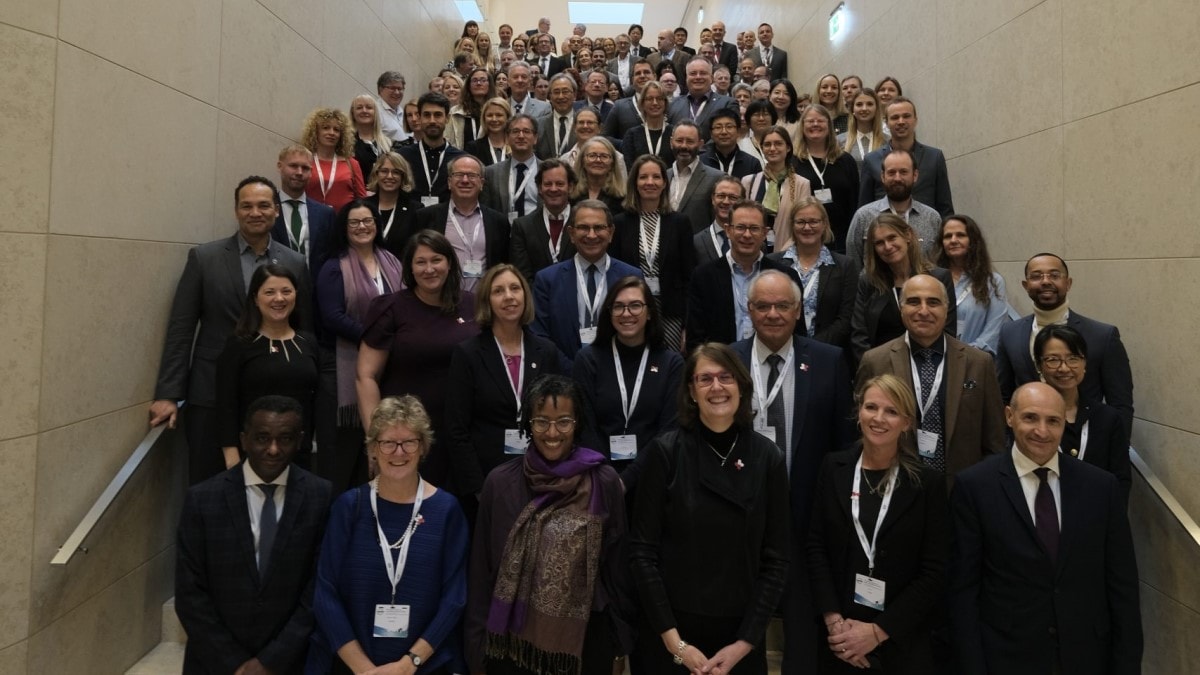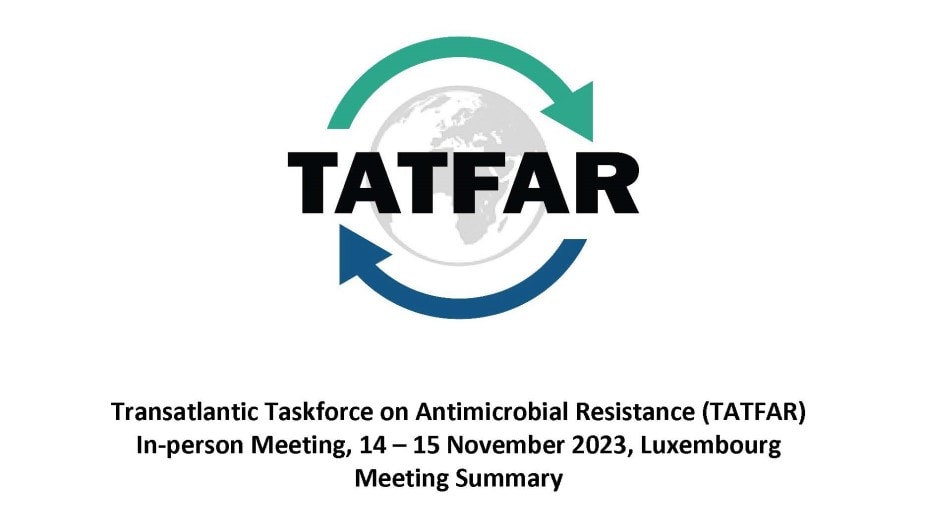Key points
- TATFAR held an in-person meeting November 14-15, 2023, in Luxembourg.
- Meeting discussions centered around how to strengthen collaboration to address shared challenges in combating antimicrobial resistance (AMR) and how to work together to develop tactics to help reduce this urgent global public health threat.

Antimicrobial resistance experts meet to discuss collaboration
Posted: December 13, 2023
The Transatlantic Taskforce on Antimicrobial Resistance (TATFAR) held its first in-person meeting since before the COVID-19 pandemic from November 14-15, 2023, in Luxembourg.
The meeting included government agency representatives from Canada, the European Union (EU), Norway, the United Kingdom (U.K) and the United States (U.S.), along with other leading experts on AMR. TATFAR members and AMR experts discussed how to strengthen collaboration to address shared challenges in combating AMR and how to work together to develop tactics to help reduce this urgent global public health threat.
The meeting was co-chaired by the European Union and the United States. Welcoming remarks were delivered by co-chairs:
- Sandra Gallina, Directorate-General for Health and Food Safety, European Commission
- Loyce Pace, Assistant Secretary for Global Affairs, U.S. Department of Health and Human Services
The plenary sessions on the first day included presentations from TATFAR members and other AMR experts, including:
- A keynote address from Christopher Fearne, Deputy Prime Minister and Minister of Health of Malta.
- A high-level panel discussion on challenges and opportunities for transatlantic cooperation on AMR.
- An overview of G7 AMR activities from Eiji Hinoshita, Assistant Minister for Global Health and Welfare in the Ministry of Health, Labor, and Welfare of Japan.
- An update on global efforts to combat AMR from Haileyesus Getahun, Director for Global Coordination and the Quadripartite Joint Secretariat on AMR at the World Health Organization.
TATFAR member representatives shared their experiences, successes, lessons learned, and challenges through several exciting and informative panel discussions, covering topics such as:
- Sales and use of antimicrobials in veterinary medicine.
- Incentives and other mechanisms for stabilizing the antimicrobials market.
- Effectively communicating about AMR and TATFAR.
- Connecting TATFAR and other global AMR efforts.
On the second day of the meeting, four breakout sessions provided opportunities for more in-depth information exchange. The breakout sessions, organized by TATFAR member representatives, addressed:
- How to improve antimicrobial-resistant organism surveillance systems using mathematical modeling.
- New approaches for AMR and healthcare-associated infection prevalence surveys and burden estimation.
- Key challenges in advancing phage therapy into clinical practice.
- Experiences with national AMR policy instruments.
TATFAR was created in 2009 to leverage the knowledge and experience of AMR experts on both sides of the Atlantic Ocean to address the urgent threat of AMR.
TATFAR members' efforts at biannual meetings and working group meetings throughout the year enhance collaboration and communication across government agencies, leading to strengthened domestic and global efforts to combat AMR and implementation of the TATFAR Work Plan.
Follow along on social media with #TATFAR. For more information about TATFAR, email [email protected].

